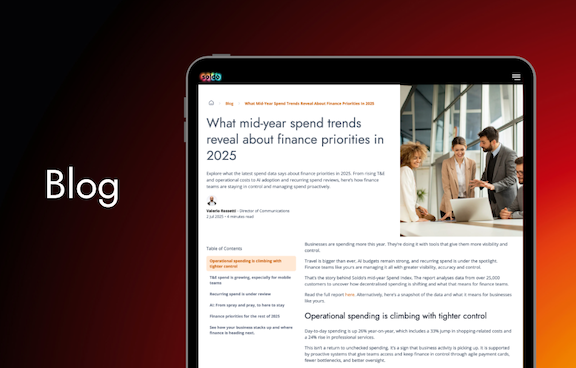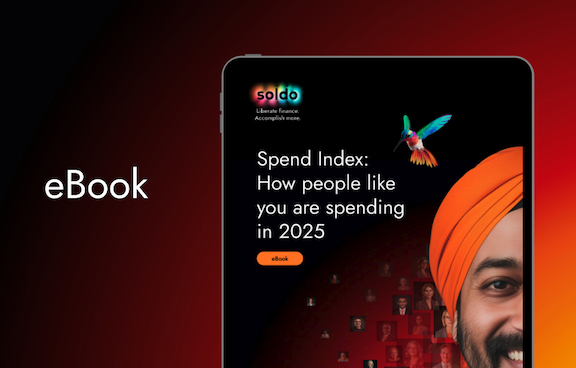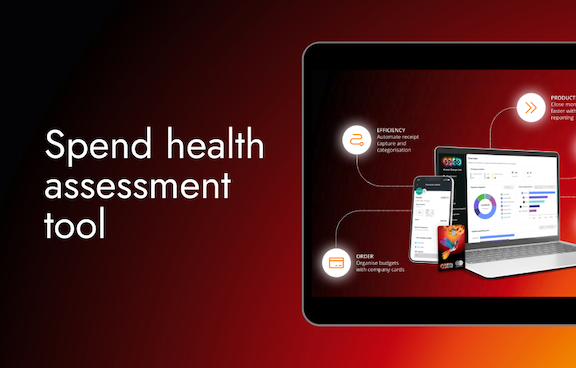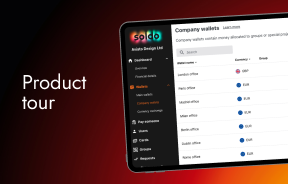07 Vena Solutions | With Darrell Cox, CFO
Episode Notes
Darrell Cox has 15+ years of senior leadership experience in finance and business development. As a former VP of Finance at FreshBooks, he is no stranger to growth-stage companies.
Now, as the CFO at Vena Solutions — a growing company specializing in cloud-based financial planning and analysis software — Darrell has worked to build a finance team that leverages technology to meet business goals and avoid rear-view mirror reporting.
To accomplish this, Darrell leans into “Agile CFO” methodology, an iterative process adopted from software development. This methodology proved especially invaluable for Vena Solutions while navigating the financial landscape of the pandemic.
Specifically, Darrell followed a cash flow break-even plan. Because the pandemic created less certainty about sales, he and his team adjusted spend accordingly. The cash flow break-even plan involved a pathway of milestones like funding opportunities, and required regularly revisiting an Agile methodology at the end of each quarter.
“Part of being Agile is that we run every quarter a full-budget process — so it’s like top-down guidance,” he says of the process. “Based on a long-term plan, we set the interim milestones. … Take those milestones apart into their individual puzzle pieces, give them to all those budget stakeholders.”
Darrell knew that his methodology would help his team adjust and adapt to achieve each milestone.
On this episode of The CFO Playbook, Darrell discusses his principles for applying an Agile approach to finance, how it can help you become a proactive CFO, and how to cultivate empathy (and why it’s necessary for finance leaders). Plus, he shares what he’s learned about managing and motivating a world-class finance team.
Guest Analysis
Name: Darrell Cox
What he does: As CFO of Vena Solutions, Darrell has built an agile finance team that leverages technology to extract data insights and take charge of the company’s financial future.
Key Quote: “My number one objective as a leader … [is] about harnessing that team and keeping them excited and motivated … toward that overall objective of building a great business and achieving the overall corporate plan.”
Where to find Darrell: LinkedIn
From Darrell Cox’s Playbook
Become an empathetic listener — it’ll make you a better finance leader.
To improve your ability to empathize (not always the most natural quality for finance leaders!), go talk to other people in the company and avoid focusing on the numbers. Imagine what it’s like to be them as a way to better understand what they care about and what’s important, Darrell recommends. That way you can better understand which numbers will matter to them and what story might be most compelling.
To motivate your team, track and measure.
To get buy-in from Vena’s growing finance team and ensure they’re meeting business objective, Darrell uses a framework like OKRs (objectives and key results) to establish goals and then measure progress on a recurring basis.
Use these seven principles to be an Agile CFO:
- Be human.
Finance leaders can be prickly. But better communication is essential for forward-looking finances that serve greater business needs.
- Tell a story — don’t just present the numbers.
Get stakeholders excited about the meaning behind the numbers. To do so, translate your numbers into a story — sift through them to see if there’s a clue on how to drive change.
- Think big.
Having a broader, overarching vision is important. Knowing where your business is going — whether it is in the next week or next five years — is critical.
- Be forward thinking.
It’s easy to constantly look back at past failures and triumphs. But constantly looking in the rear view mirror is reductive.
- Embrace and own change.
The pandemic has completely rewritten the playbook on how to approach customers and conduct business. Instead of resisting changes like these, embrace them.
- Create a bias to action.
When you embrace change, you’ll also have the added benefit of being a player in the field rather than a bystander. Don’t be satisfied with the status quo; instead, take advantage of this updated vantage point.
- Embrace technology.
Technology is at the heart of any modern finance department. Aligning your team with the right technology can lead to more useful data, letting you iterate your business solutions.
Episode Highlights
Tech-enable finance helps make sense of data
“Finance people and business people before me have been able to do it with much older technology, technology has become that much more important for the finance person to be able to do what I do. The reason is because it just, there’s just so much more data, right? Like every little appliance is measuring a heartbeat and sending it to some database somewhere … your sales funnel leads come in and there are milestones, conversion rates along the way — it turns into revenue. There’s so much in there. The more you can get at it, the more rich of a story you can get into [and] a better understanding of what’s happening. But if you don’t have technology, good luck.”
Taking an agile approach to finance
“I have these agile principles of finance … so you can thoughtfully look at [a problem] and consider: Am I doing this? Am I not doing that? Parse it out. So that’s helpful to understand. … It’s got to be iterative. So just like the development, agile, it’s got to be iterative, small pieces. … so that you can be quick and efficient at turning and adopting. You’ve got to focus on the key objectives. What are you trying to do? Is your objective to make great software? Or, build a great business or is it simply to document your processes?
Effective finance leaders channel empathy
“I wish I could say that completely came natural to me and I wish I could say I’m actually really good at [empathy]. I work on that every day — that is one of my most important things is as a leader — is to be on the ball with that. … I look at some of my friends and peers and the most successful finance leaders that I know — they have that. They’re not only really great with the numbers, but they know who they’re talking to, they know what that person is concerned with … they say the right stuff at the right time in a way that is most human and most energizing … It’s like you understand their situation — what is going to get them excited and motivated? Why do they get up in the morning? — and talk to that.”
Analytics and finance need to play nice
“A lot of companies do have analytics departments, including Vena. But that doesn’t mean the finance department shouldn’t be doing the same thing. There’s a handshake somewhere in between. You’re partners. Finance still has all the ability to and can drive better business decisions … by working hand-in-hand with analytics departments … drawing data from that, bringing it into the plans and going an extra level of depth into the planning process. So it’s not just about the financial numbers — it’s about the KPIs, the drivers that propel the business and wind up eventually as a financial number. You can have a much more effective plan by getting in there and working hand-in-hand with those groups and do better analysis as a finance team by leveraging what they’re putting together and looking at it through your finance lens, which is a great business lens.”
Include your team in the business planning process
“Everyone in … your company can participate in [the business planning] process. And that’s important because the more people you have involved … [the more] responsible and accountable they feel, and the better aligned you are as a team, right? And the other important thing is you gotta be able to do it fast. And that was really important with this pandemic because … if we weren’t able to readjust our plan … we wouldn’t have been able to reset our guidelines.”
Know where the business is headed to optimize your funding strategy
“We’re always looking to understand five years plus out, know where we want to be and what is the optimum balance of spend versus growth that we can achieve. You can look at that self-funded or you can look at that with some funding assistance and then you can also look at what type of capital you can raise — be it debt or equity or different kinds of equity, different kinds of debt to further optimize. We have a very long-term plan. I can see pretty far out — and we plan to leverage equity and leverage debt. So that last $25 million round [in September 2020] was a planned round … securing that well before we need it, so that we’re never in a position where you need something … We only ever want to do something. It’s not need to do something.”
Top quotes:
“What do you want to accomplish? What is most important to the business? Thinking further out into the future; thinking now, maybe some issues are urgent now.”
“So [it’s] getting out front, it’s thinking big, and then it’s allocating the resources between all the other things you can do, because you can also drive growth and customer satisfaction with development.”
“And our … objectives roll up to the total overall companies. But if I look at … the kind of objectives we’re looking at on the finance team … It’s about … looking at what the rest of the business is doing, understanding how we’re going to support that. And making sure we have the staff, the resources, that technology in place to accomplish that.”
“So you do a plan [and] turn [it] into a budget. You execute. You measure against that plan, you evaluate how you did, and then you decide whether or not you’re going to change your plan or not change your budget again … [T]o do that most effectively … if things are changing or if you want to make a change.”
“I imagine I bring numbers from different places. I mashed them up and … I sift them around. It’s like reading the tea leaves, like what is going on in there? And I try to get that story out … but I look at the numbers and what do I see and how do you get that message out to the business to drive change, to make an influence, to make, to grow faster.”

















